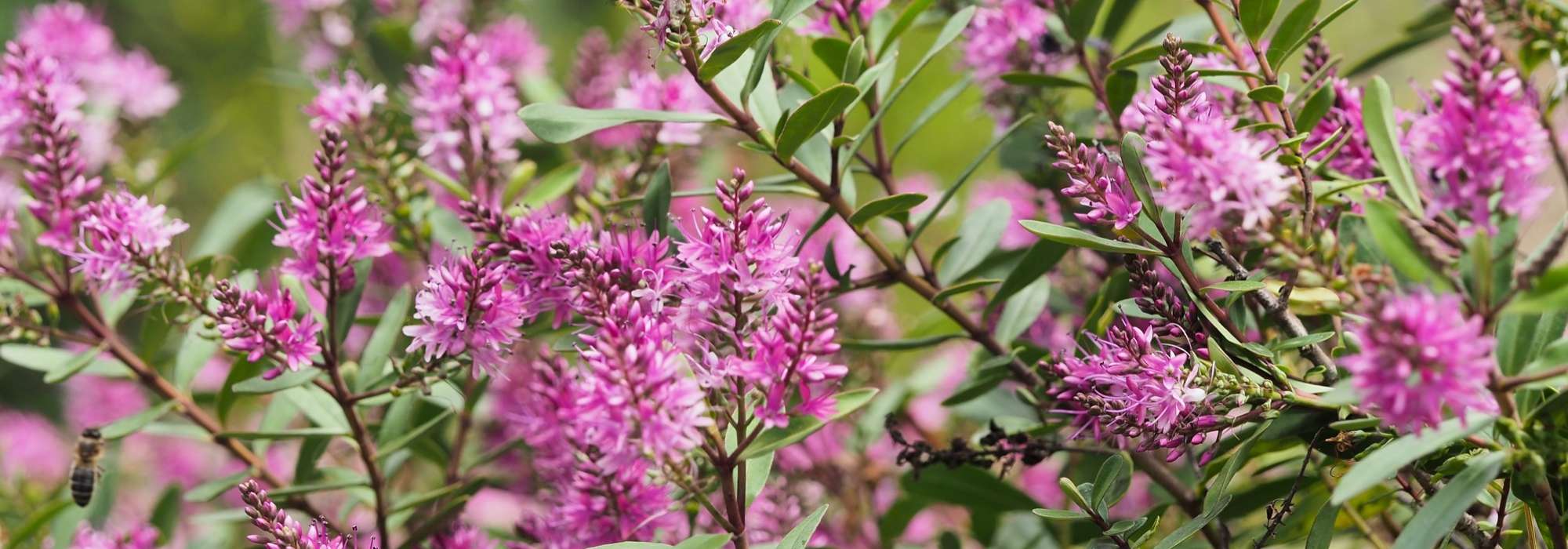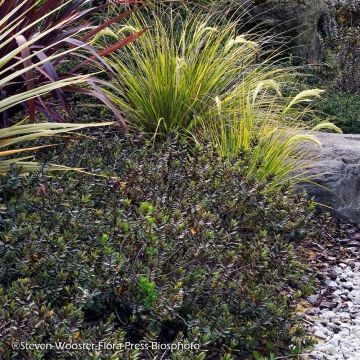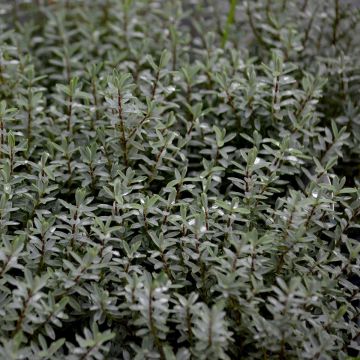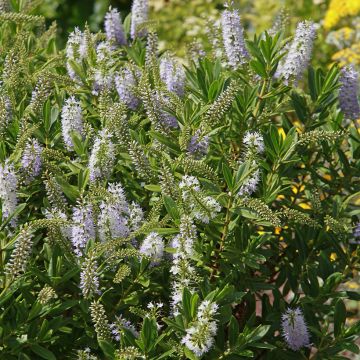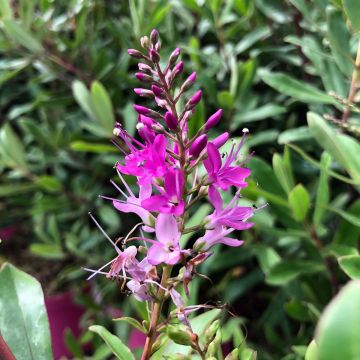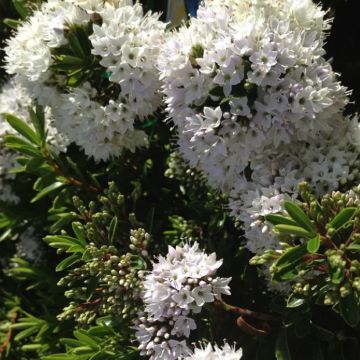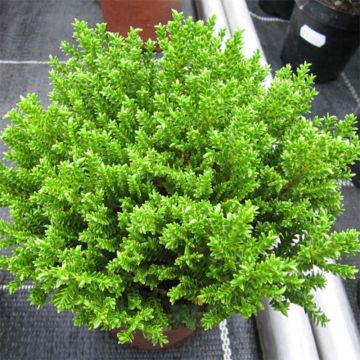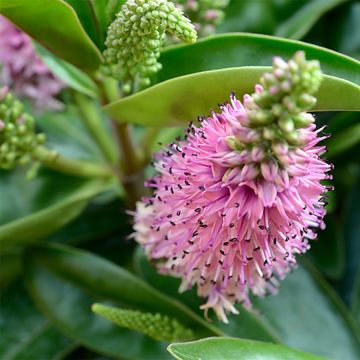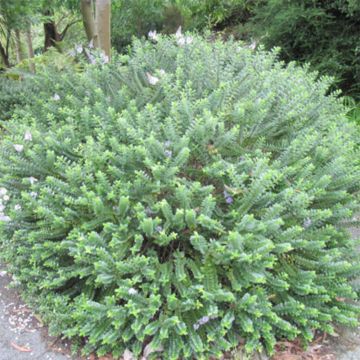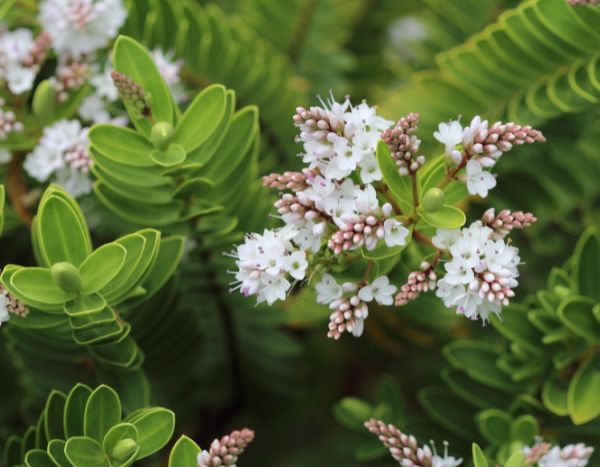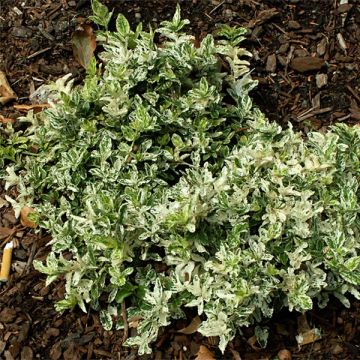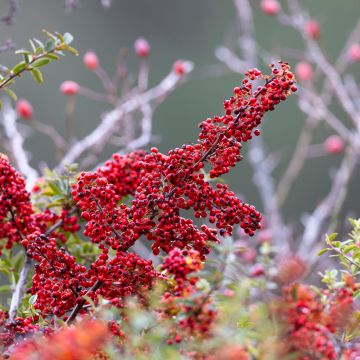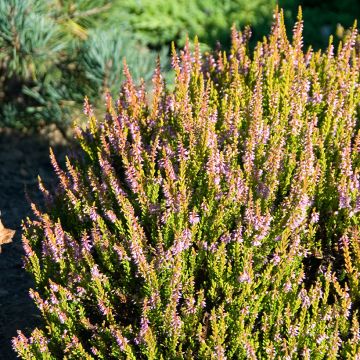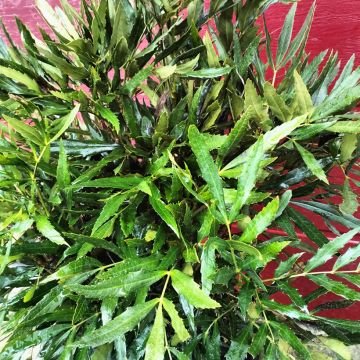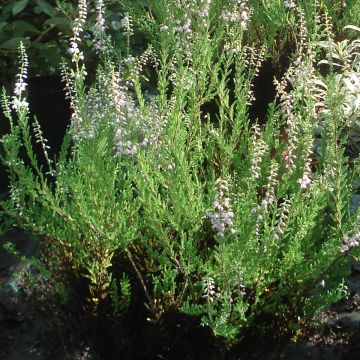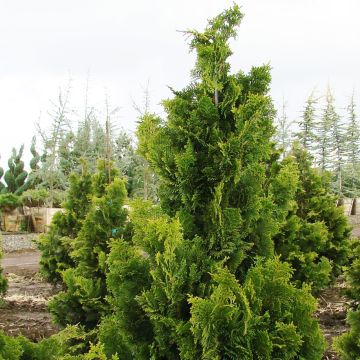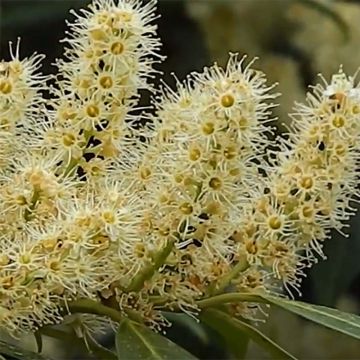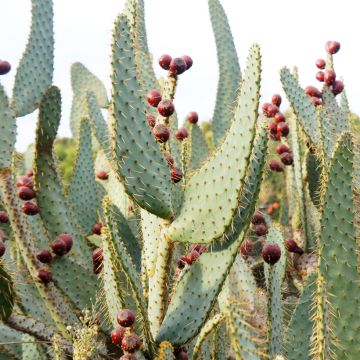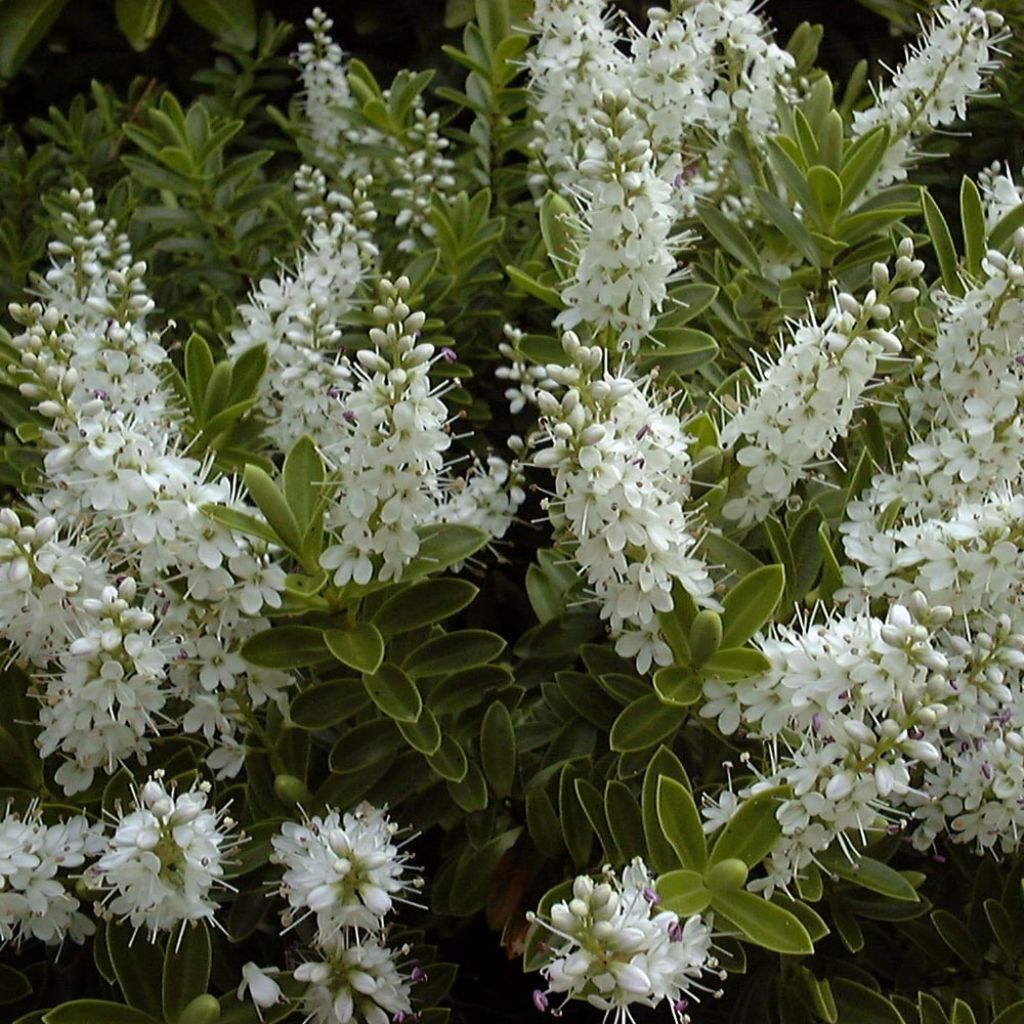

Hebe rakaiensis - Shrubby Veronica
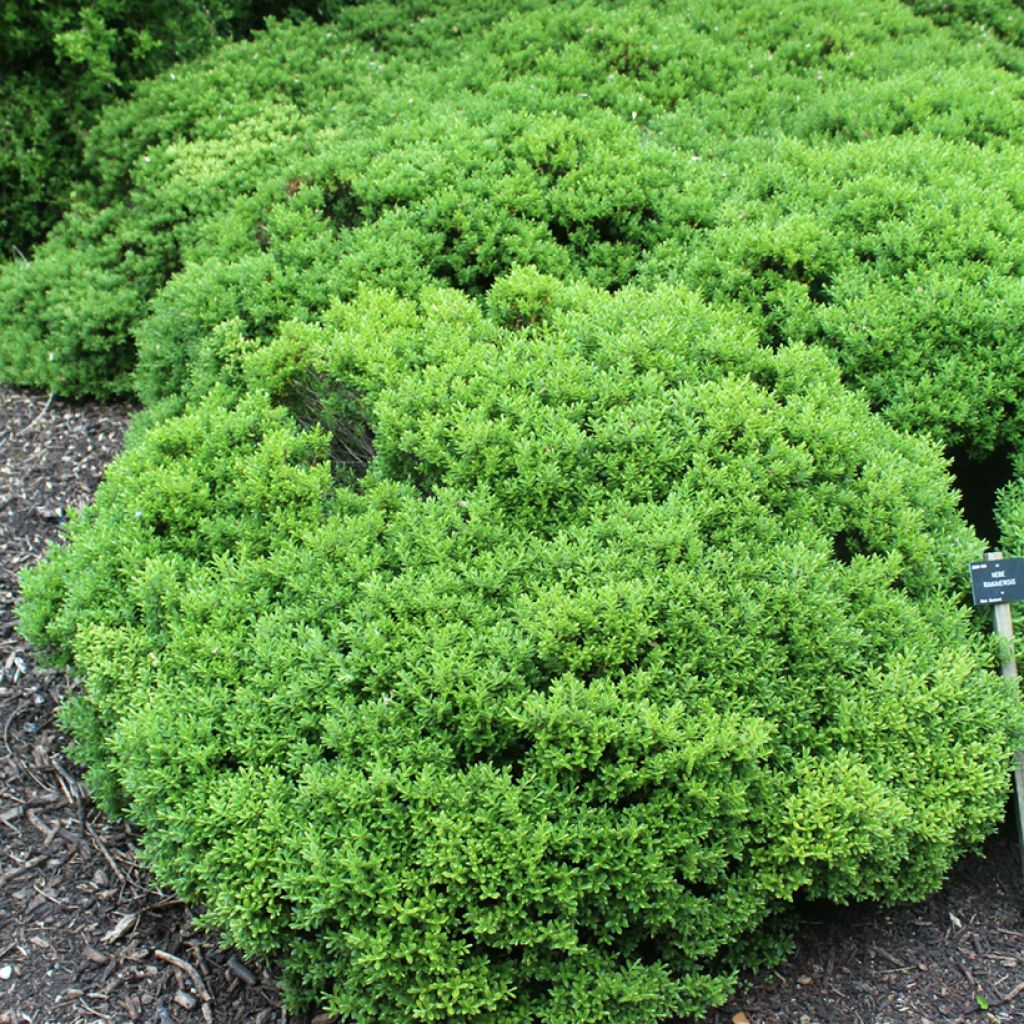

Hebe rakaiensis - Shrubby Veronica
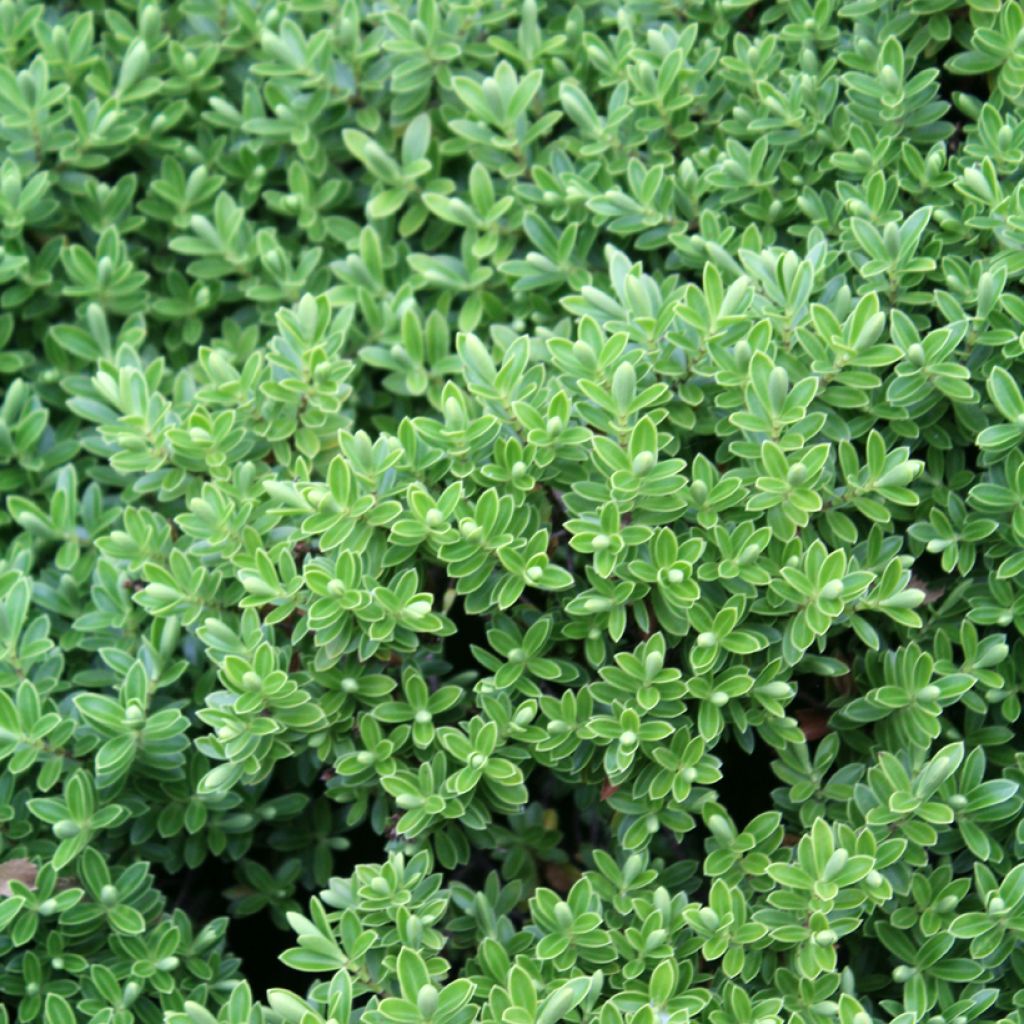

Hebe rakaiensis - Shrubby Veronica
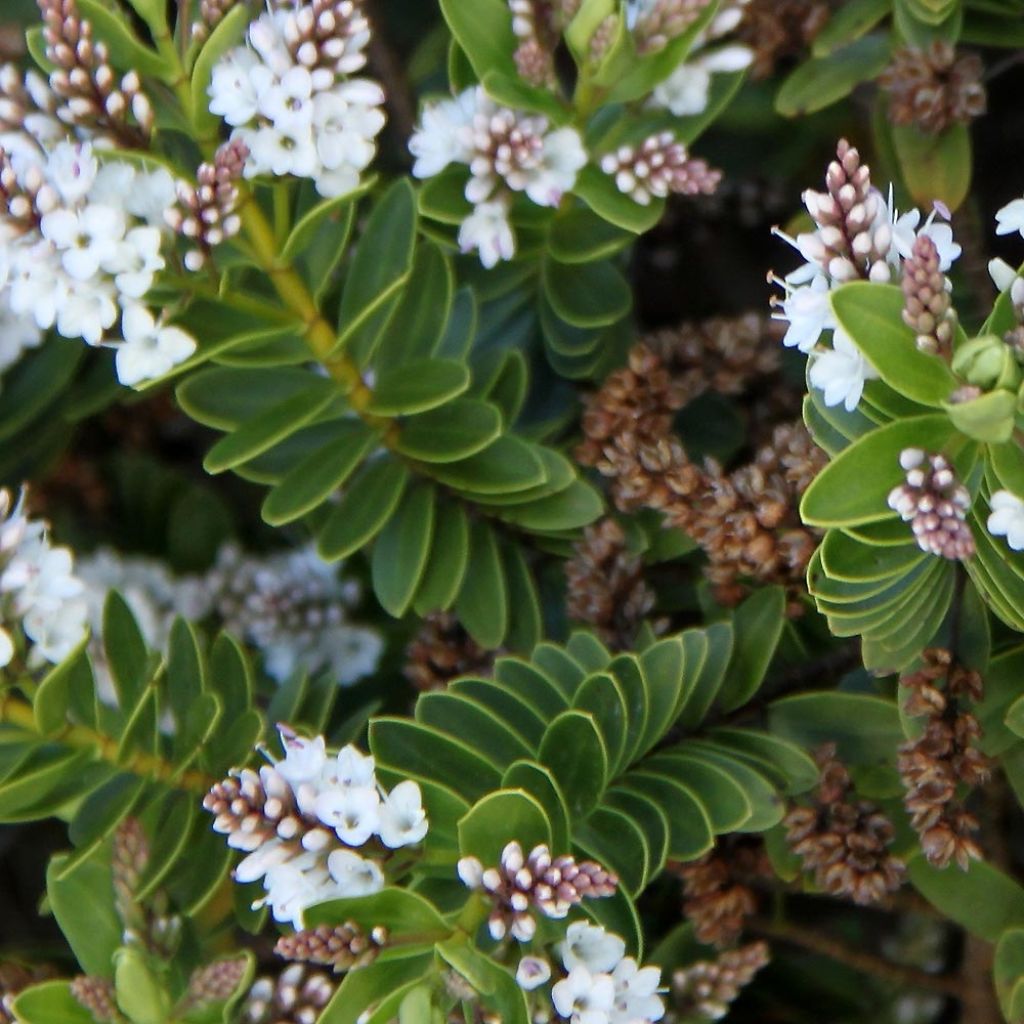

Hebe rakaiensis - Shrubby Veronica
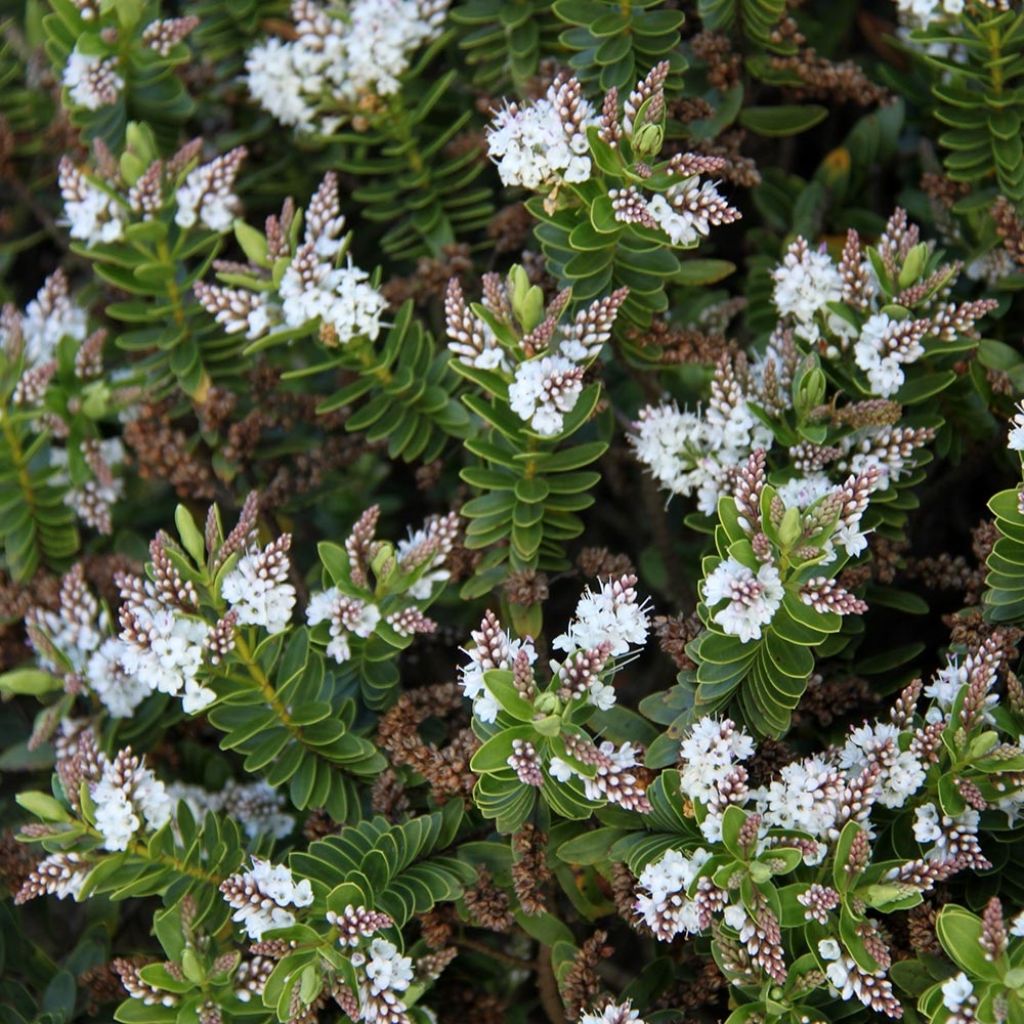

Hebe rakaiensis - Shrubby Veronica
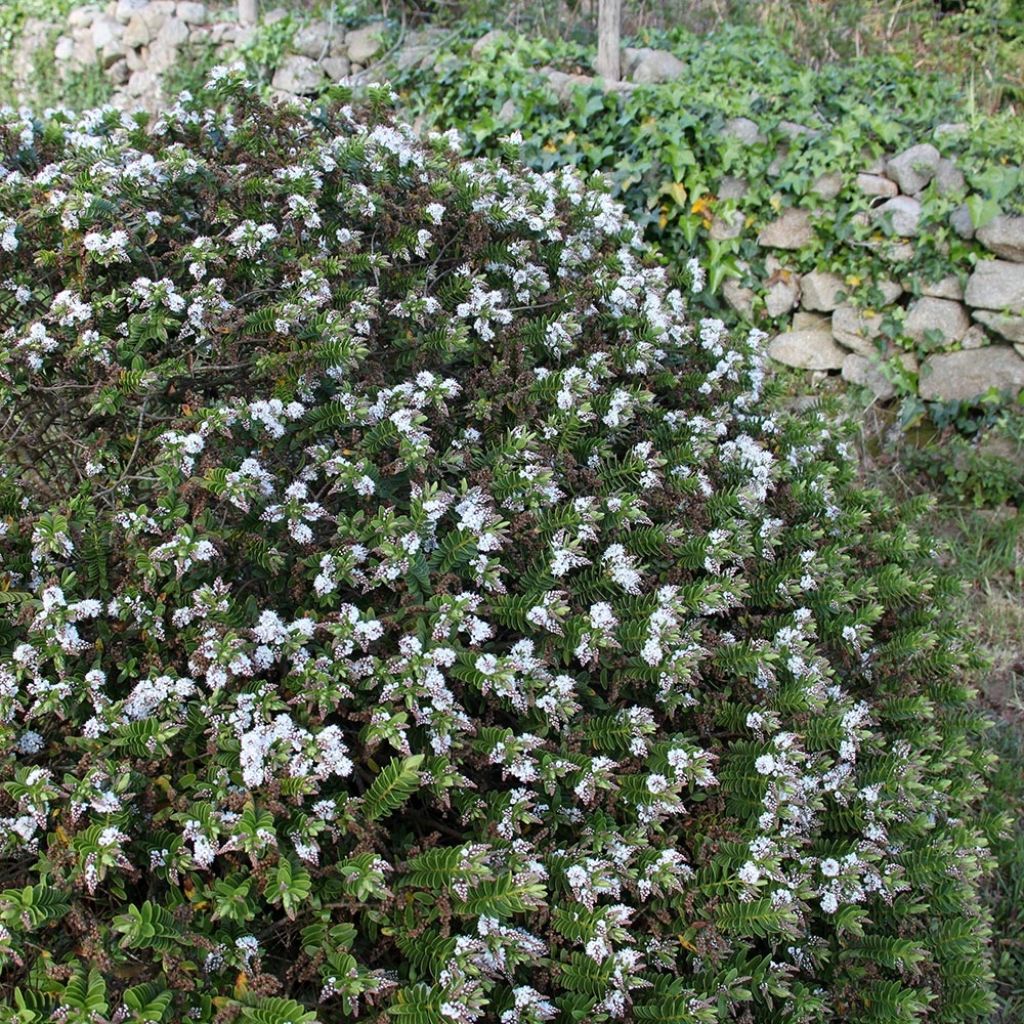

Hebe rakaiensis - Shrubby Veronica
Hebe rakaiensis - Shrubby Veronica
Hebe rakaiensis
Shrubby Veronica, Speedwell shrub
Very pretty Veronica, very decorative.
Hélène, 06/08/2025
Special offer!
Receive a €20 voucher for any order over €90 (excluding delivery costs, credit notes, and plastic-free options)!
1- Add your favorite plants to your cart.
2- Once you have reached €90, confirm your order (you can even choose the delivery date!).
3- As soon as your order is shipped, you will receive an email containing your voucher code, valid for 3 months (90 days).
Your voucher is unique and can only be used once, for any order with a minimum value of €20, excluding delivery costs.
Can be combined with other current offers, non-divisible and non-refundable.
Home or relay delivery (depending on size and destination)
Schedule delivery date,
and select date in basket
This plant carries a 24 months recovery warranty
More information
We guarantee the quality of our plants for a full growing cycle, and will replace at our expense any plant that fails to recover under normal climatic and planting conditions.
Does this plant fit my garden?
Set up your Plantfit profile →
Description
Hebe rakaiensis or Rakai Hebe is one of the hardiest and most tolerant Speedwell shrubs, as long as the soil is very well-drained. This compact species forms a delightful small rounded bush, densely leafy, with a bright green colour, easy to integrate with all kinds of perennial plants or small flowering shrubs. It blooms from June to August, elegantly, in the form of very bright white spikes above the shiny foliage. Hardy for the genus, it tolerates sea spray and dry, poor soils; in summary, it is an excellent rockery or sunny terrace plant, capable of living for many years in the garden. In cold and wet regions, it is best to grow it in a pot and store it indoors during winter.
Hebe rakaiensis belongs to the Plantaginaceae family and is related to perennial veronica. It is a botanic species native to the dry mountainous regions of the South Island, New Zealand. This well-branched shrubby perennial plant grows relatively fast in moist soil, with a bushy and rounded habit, very dense, reaching about 90 cm (35 in) in height and 1.20 m (4 ft) in width at maturity. In dry and poor soil its growth will be slower and it will rarely exceed 50 cm (20 in) in height. Its stems, which lignify with age, bear small oval, concave, 1 to 1.5 cm (0.4 to 0.6 in) long, thick and leathery leaves. They are bright green in colour. Flowering takes place from June to August in the form of numerous small terminal inflorescences. Each small cluster has a light appearance due to the long purple anthers that protrude from the small white flowers. Pruning is not necessary for this naturally compact veronica, which has good longevity in well-drained soil.
Often slow-growing and relatively less hardy, Hebes are generally grouped with perennial plants because their usage is closer to these than to shrubs. The Rakai Hebe, on the other hand, has a robust, hardy, and long-lasting character. Its compact and dense ball-shaped development is equally suitable for ornamenting terraces and balconies as it is for large ground cover in dry terrain, or for structuring the decor of a large rockery. This veronica tolerates the presence of limestone in the soil. Depending on preference and the soil conditions, it can be combined with bushy heathers or non-bushy heathers (Erica multiflora, Calluna, Erica cinerea) as well as Fabiana, Globularia alypum, Lithodora, dwarf artemisias, or creeping rosemary. It can also be used for topiary, instead of boxwood, as it allows for softer shapes. In favourable climates it will create neat borders for paths or terraces as well as forming very dense carpets. In cold regions Hebes can be grown in large pots on the terrace, and stored in a bright, unheated space during winter. It should be noted that Hebes are well-suited for urban gardens, as they tolerate pollution quite well.
Hebe rakaiensis - Shrubby Veronica in pictures
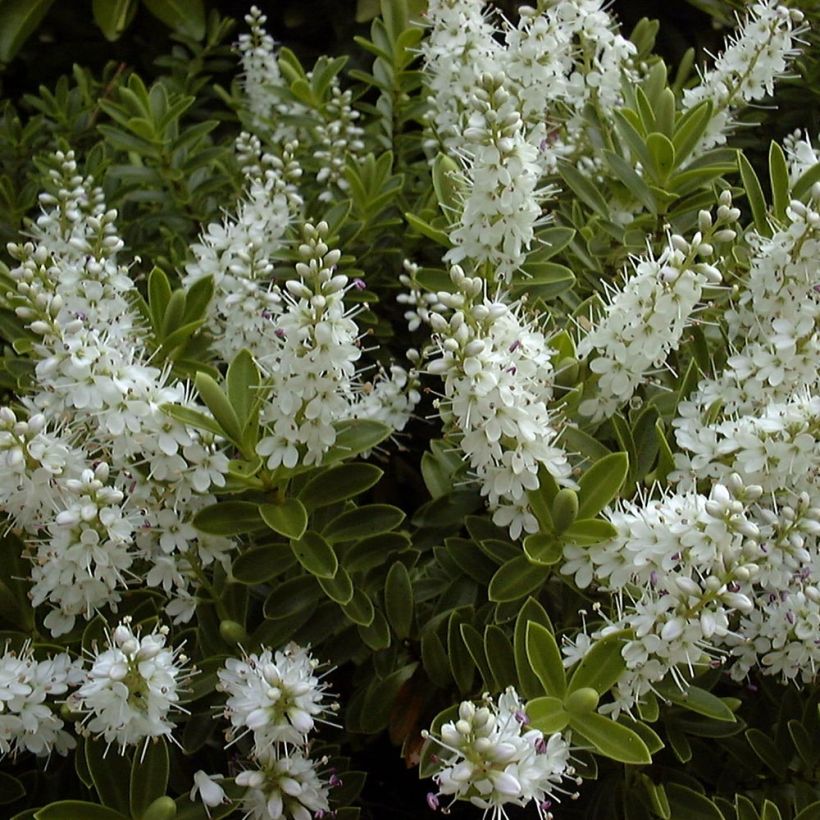





Plant habit
Flowering
Foliage
Botanical data
Hebe
rakaiensis
Plantaginaceae
Shrubby Veronica, Speedwell shrub
Veronica rakaiensis
Cultivar or hybrid
Other Hebe - Shrubby Veronica
View all →Planting and care
Hebe rakaiensis is preferably planted in spring in a cool climate, or in October in warmer regions. Hardy to around -12°C (10.4 °F), in soil without stagnant moisture, provided that frosts are of short duration. It prefers sunny sites and very well-drained, humus-rich and porous, even sandy soils, sufficiently deep and well-worked. This plant tolerates the presence of limestone in the soil (if not excessive). It also tolerates sea spray (more than 100m (328 ft 1 in) from the shore) and soils that are dry in summer, once it is well established. In gardens with heavy soils and a wet climate, Hebes should be reserved for rockeries, gravel gardens or sloping banks. It enjoys a rich soil that is always well-drained. In the colder regions of Northern Europe it is necessary to protect these shrubs during winter or cultivate them in pots, bringing them indoors during periods of freezing weather.
Planting period
Intended location
Care
Planting & care advice
-
, onOrder confirmed
Reply from on Promesse de fleurs
Similar products
Haven't found what you were looking for?
Hardiness is the lowest winter temperature a plant can endure without suffering serious damage or even dying. However, hardiness is affected by location (a sheltered area, such as a patio), protection (winter cover) and soil type (hardiness is improved by well-drained soil).

Photo Sharing Terms & Conditions
In order to encourage gardeners to interact and share their experiences, Promesse de fleurs offers various media enabling content to be uploaded onto its Site - in particular via the ‘Photo sharing’ module.
The User agrees to refrain from:
- Posting any content that is illegal, prejudicial, insulting, racist, inciteful to hatred, revisionist, contrary to public decency, that infringes on privacy or on the privacy rights of third parties, in particular the publicity rights of persons and goods, intellectual property rights, or the right to privacy.
- Submitting content on behalf of a third party;
- Impersonate the identity of a third party and/or publish any personal information about a third party;
In general, the User undertakes to refrain from any unethical behaviour.
All Content (in particular text, comments, files, images, photos, videos, creative works, etc.), which may be subject to property or intellectual property rights, image or other private rights, shall remain the property of the User, subject to the limited rights granted by the terms of the licence granted by Promesse de fleurs as stated below. Users are at liberty to publish or not to publish such Content on the Site, notably via the ‘Photo Sharing’ facility, and accept that this Content shall be made public and freely accessible, notably on the Internet.
Users further acknowledge, undertake to have ,and guarantee that they hold all necessary rights and permissions to publish such material on the Site, in particular with regard to the legislation in force pertaining to any privacy, property, intellectual property, image, or contractual rights, or rights of any other nature. By publishing such Content on the Site, Users acknowledge accepting full liability as publishers of the Content within the meaning of the law, and grant Promesse de fleurs, free of charge, an inclusive, worldwide licence for the said Content for the entire duration of its publication, including all reproduction, representation, up/downloading, displaying, performing, transmission, and storage rights.
Users also grant permission for their name to be linked to the Content and accept that this link may not always be made available.
By engaging in posting material, Users consent to their Content becoming automatically accessible on the Internet, in particular on other sites and/or blogs and/or web pages of the Promesse de fleurs site, including in particular social pages and the Promesse de fleurs catalogue.
Users may secure the removal of entrusted content free of charge by issuing a simple request via our contact form.
The flowering period indicated on our website applies to countries and regions located in USDA zone 8 (France, the United Kingdom, Ireland, the Netherlands, etc.)
It will vary according to where you live:
- In zones 9 to 10 (Italy, Spain, Greece, etc.), flowering will occur about 2 to 4 weeks earlier.
- In zones 6 to 7 (Germany, Poland, Slovenia, and lower mountainous regions), flowering will be delayed by 2 to 3 weeks.
- In zone 5 (Central Europe, Scandinavia), blooming will be delayed by 3 to 5 weeks.
In temperate climates, pruning of spring-flowering shrubs (forsythia, spireas, etc.) should be done just after flowering.
Pruning of summer-flowering shrubs (Indian Lilac, Perovskia, etc.) can be done in winter or spring.
In cold regions as well as with frost-sensitive plants, avoid pruning too early when severe frosts may still occur.
The planting period indicated on our website applies to countries and regions located in USDA zone 8 (France, United Kingdom, Ireland, Netherlands).
It will vary according to where you live:
- In Mediterranean zones (Marseille, Madrid, Milan, etc.), autumn and winter are the best planting periods.
- In continental zones (Strasbourg, Munich, Vienna, etc.), delay planting by 2 to 3 weeks in spring and bring it forward by 2 to 4 weeks in autumn.
- In mountainous regions (the Alps, Pyrenees, Carpathians, etc.), it is best to plant in late spring (May-June) or late summer (August-September).
The harvesting period indicated on our website applies to countries and regions in USDA zone 8 (France, England, Ireland, the Netherlands).
In colder areas (Scandinavia, Poland, Austria...) fruit and vegetable harvests are likely to be delayed by 3-4 weeks.
In warmer areas (Italy, Spain, Greece, etc.), harvesting will probably take place earlier, depending on weather conditions.
The sowing periods indicated on our website apply to countries and regions within USDA Zone 8 (France, UK, Ireland, Netherlands).
In colder areas (Scandinavia, Poland, Austria...), delay any outdoor sowing by 3-4 weeks, or sow under glass.
In warmer climes (Italy, Spain, Greece, etc.), bring outdoor sowing forward by a few weeks.






























